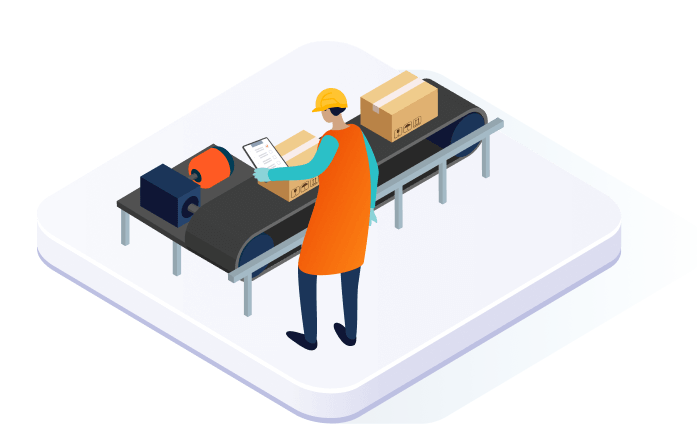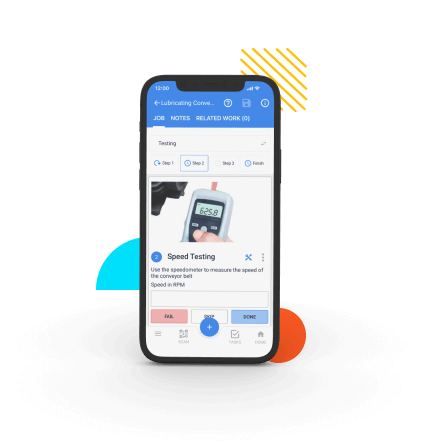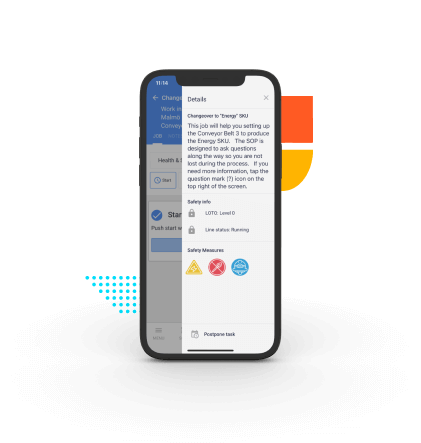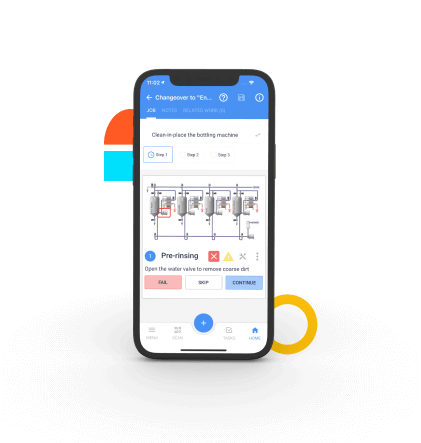
Manufacturing SOPs: a complete guide
Manufacturing SOPs are key to running efficient factories. Explore how you can boost SOP effectiveness through digitalization.

Manufacturing SOPs are of vital importance to running a shop floor efficiently. SOPs structure how operators perform their tasks and ensure that work is done in a unified way factory-wide—sometimes worldwide.
Manufacturers generally use paper-based SOPs, which significantly limits their effectiveness. Optimally effective SOPs can have tremendous benefits for your factory, like increasing OEE, improving safety, and boosting operator efficiency. Research furthermore indicates that good SOPs can be a motivating factor for operators.
In this blog we’ll walk you through everything you need to know about SOPs, and then go into the four steps you can take to enhance SOP effectiveness through digitalization.

What are manufacturing SOPs?
Manufacturing SOPs are step-by-step work instructions that guide operators through a task. SOP is an abbreviation for ‘standard operating procedure.’ The main goal of setting up an SOP is to structure and standardize the way in which work is done. Accurate, easy-to-follow SOPs help increase the efficiency and safety of operators.
Why are manufacturing SOPs important?
Manufacturing SOPs are of tremendous importance because they unify the way in which different operators do the same tasks.
When operators work in a standardized way, the quality and speed of work is made consistent.
A continued focus on streamlining SOPs can therefore be a great continuous improvement tool and lead to OEE increase.
What are the benefits of digital SOPs?
The primary benefit of digital SOPs is that they exist on mobile-enabled apps.
This means that all the practical annoyances of paper can be safely forgotten, and operators can instead easily consult an SOP anytime, anywhere.
Because operators always follow the same troubleshooting steps, maintenance issues will become easier to resolve and maintenance will be of higher quality.
Digital SOPs can also be swiftly adjusted and updated factory-wide, opening the door to an ongoing process of SOP improvement. This makes digital SOPs a powerful continuous improvement tool that can lead to OEE benefits.

This allows new operators to be trained in a shorter amount of time. Instead of having to rely on the assistance of older operators to perform unfamiliar tasks, unexperienced operators can perform them with the aid of their digital device.
This has the further benefit of reducing the negative consequences of expertise walking out of your factory. Lastly, it should be noted that SOPs, because they exist in the digital realm, can be defined and shared on a global scale. Their continuous improvement benefits are therefore not merely limited to a single factory!
In the next paragraphs, we’ll go through the four steps you can take to digitize your SOPs.
The 4 steps to creating optimal manufacturing SOPs
1. Select the right application

There are various applications on the market that have the capability of creating SOPs. An app should ideally be able to:
- Be used offline
- Function on various smart devices
- Host different types of media, like videos and pictures
- Share SOPs with multiple plants to consolidate shared knowledge
- Link to necessary safety measures that need to be taken before starting an SOP
- Automate SOP scheduling to make SOPs appear automatically when required
- Assign and track SOP completion
2. Digitalize and test a small number of SOPs

When you’ve picked the app you think fits your manufacturing operation best, ensure that it is conform to expectations and is able to do what you want. If everything is in good order, you can start digitalizing a small number (2-5) of your existing SOPs.
After your SOPs are digitalized, we recommend running a trial phase on a small scale. Select and train a team of operators tied to a single production line to test the app for one to two months. In this time, the team can get used to the look and feel of the software, which will allow them to instruct other operators after the trial phase. This is also the time for ironing out the software’s quirks and figuring out how it is best configured and used.
Pro tip:
The initial test group should function as ambassadors for the new app, and it is important that they are enthusiastic about working with digital SOPs. Enthusiasm is contagious: if the trial group is happy with the system, other operators will in turn be excited to work with it.
3. Roll out the application plant-wide

If the trial phase is a success and the system is configured properly, it can be rolled out across more production lines. This is the time when you create more digital SOPs and perfect the existing ones by adding videos and pictures to them.
A possible issue at this stage is that operators might be hesitant to switch to a novel way of working.
People are, in general, attached to their habits, and it is only natural that there will be some pushback. It is important to react to this in a proper manner. Try to convince your operators of the efficiency of the new system .
Your trial team of ‘ambassadors’ play a big part in this: they can provide support and training to other operators. Make compromises with operators who are hesitant about working with the new app, so that they don’t have to change their way of working too radically.
Good communication is key: operators should be notified beforehand about the introduction of digital SOPs, and they should be kept up to date about the trial phase, when and how the app will be rolled out, and so on.
Pro tip:
Older operators might have trouble working with digital technology, and should have the ability to attend additional training sessions.
Have some patience with your older operators; you don’t want them to turn into ‘blockers’.
The success of any plant-wide digital transformation depends on the contentedness of every employee. We recommend involving your senior operators in rolling out the app, as their knowledge can be of tremendous help with creating good SOPs.
4. Teach operators to manage SOPs autonomously
In this final step, we recommend you train operators to create new SOPs – and adjust old ones – on their own.
Operators are obviously more aware of the reality of shop floor activity than any other employee.
Inaccurate SOPs will frustrate operators immensely, and there is a great chance that SOPs will not conform to reality when someone outside of the shop floor defines them. Letting operators define the content of their SOPs gives them an opportunity to improve and streamline something they use every day, which in the end will improve their work satisfaction!
Related Articles

Digitize your inspections, audits and checklists

4Industry targets Nordic market via strategic partnership with Advania

